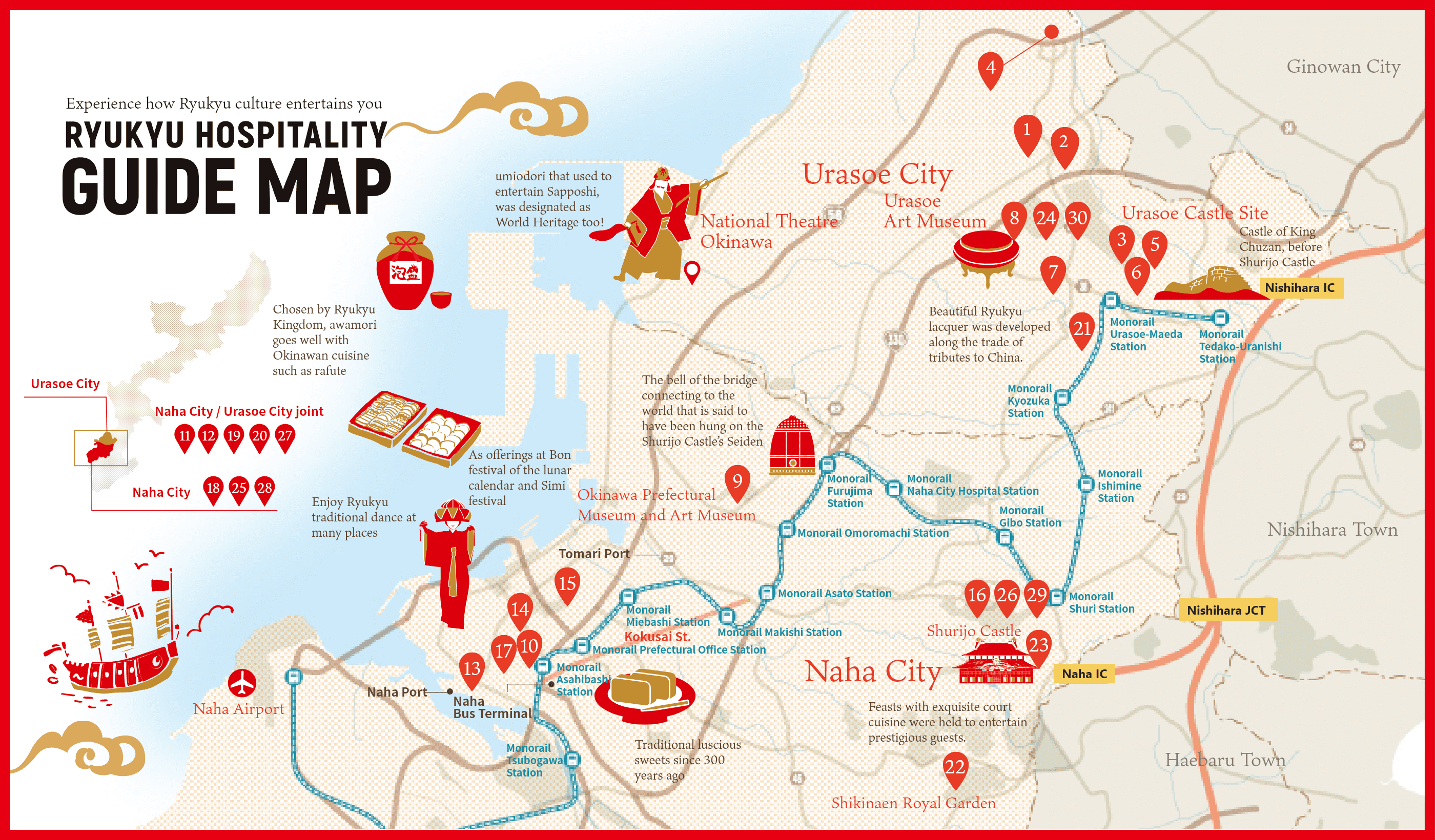Cultural properties of stories designated as Japan Heritage are 29 total, in which there are 14 stories from Naha City, 10 stories from Urasoe City, 5 joint stories.
Let’s experience Ryukyu culture by stopping by these entertainment sites!
1
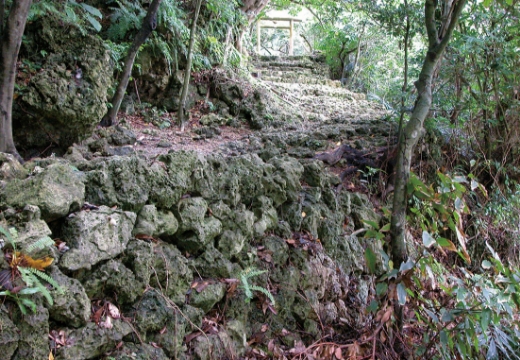
Iso-joseki Castle Ruins
- National place of scenic beauty / Prefectural designated historic site
- Urasoe City
Nationally designated Important Cultural Property
The birthplace of King Eiso, who was born in a royal lineage that prospered in the ancient Ryukyus. There remains a legend that this gusuku (castle) was built by Amamikyu, a goddess who appears in Ryukyu Kaibyaku Shinwa (Ryukyu creation mythology). The Omoro Soshi, a collection of ancient Ryukyuan poems and songs, contains an omoro (ancient poem) that says that Eiso used to engage in sake drinking sprees during the summer and winter, and there is an Omoro stone monument at the foot of Iso Gusuku.
Bus Stop: 9 minutes walk from Urasoe Sogo Byoin-nishiguchi Bus Stop
2
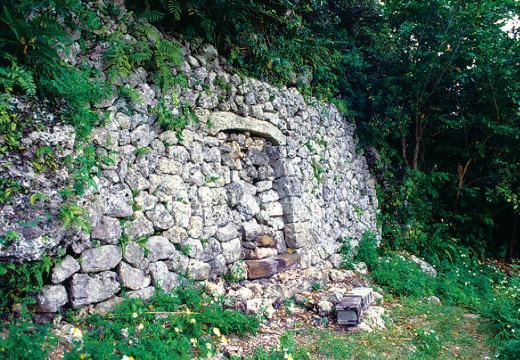
Iso-no-Takauhaka Tomb
- Prefectural designated tangible cultural property (structure)
- Urasoe City
A tomb where it is said that the remains of Eiso’s father and grandfather rest. It is a tomb that uses a cave halfway up a cliff with the front blocked with stone masonry. It has been designated as a tangible cultural property (structure) by the prefectural government.
Bus Stop: 5 minutes walk from Urasoe Sogo Byoin-nishiguchi Bus Stop
3
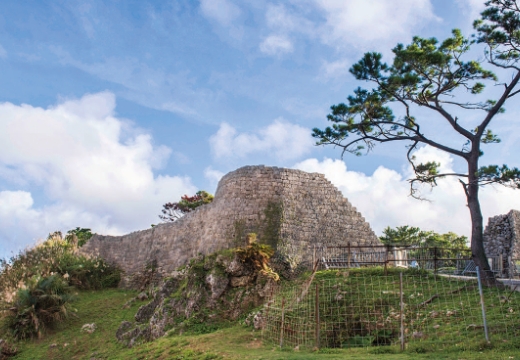
Urasoe-joseki Castle Ruins
- National designated historic site
- Urasoe City
Built in the 13th century, this became a large gusuku in the 14th century surrounded by stone masonry castle walls with a seiden (main hall) covered by Goryeo (Koryo) style tile-roofing at the center. There are also temples and communities around it, and the prototype of Shuri, which later became the royal capital, was completed here.
Bus Stop: 6 minutes walk from Nakama Bus Stop
Yui Rail: 13 minutes walk from Urasoe-Maeda Station
4
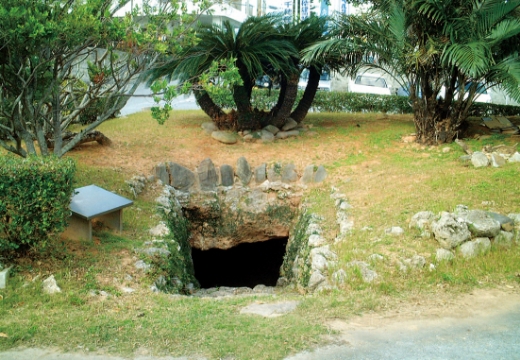
Makiminato Terabu no Gama
- Municipal designated historic site
- Urasoe City
A cave ruin in Makiminato, which used to serve as a port for Makiminato. The cave is linked to King Shunten. According to legend, Shunten was the son of Minamoto-no-Tametomo (a Heian period Japanese warrior), who came to Ryukyu in the late 12th century.
Bus Stop: 5 minutes walk from Makiminato Bus Stop
5
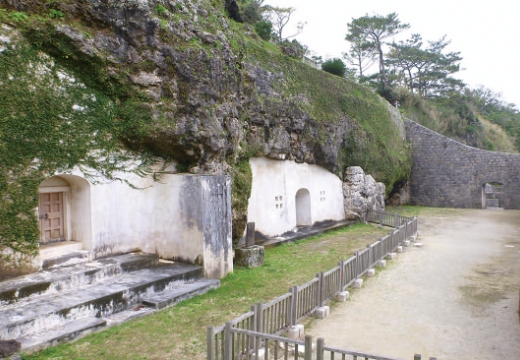
Urasoe Yodore
- National designated historic site
- Urasoe City
A mausoleum where King Eiso of the early Ryukyu Kingdom and King Sho Nei, the 7th king of the Second Sho Dynasty of the Ryukyu kingdom, and their families are entombed.
Bus Stop: 10 minutes walk from Nakama Bus Stop
Yui Rail: 15 minutes walk from Urasoe-Maeda Station
6
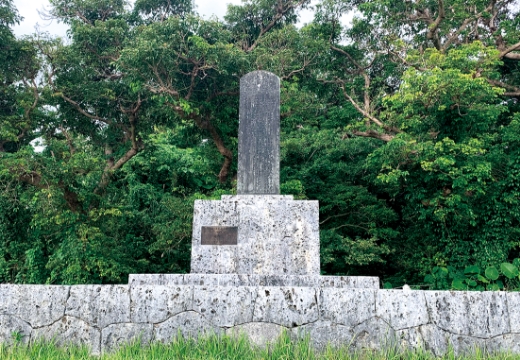
Monument in Front of Urasoe Castle
- National designated historic site
- Urasoe City
A monument built to commemorate the completion of a road paved to connect Urasoe Gusuku and Shurijo Castle under King Sho Nei’s order in 1597.
Bus Stop: 5 minutes walk from Maeda-nishi-iriguchi Bus Stop
Yui Rail: 8 minutes walk from Urasoe-Maeda Station
7
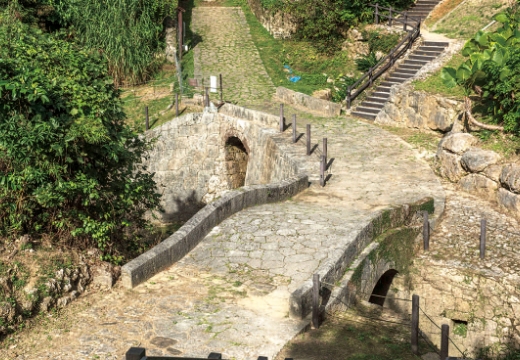
Nakagamiho Nishikaido (King Sho Nei’s Road)
- National designated historic site
- Urasoe City
An ancient road connecting Shurijo Castle and Urasoe Gusuku. Old roadway (cobblestone road) that was repaired under the order of the King Sho Nei, the 7th King of the Second Sho Dynasty.
Bus Stop: 2 minutes walk from Chayama Danchi-mae Bus Stop
Yui Rail: 15 minutes walk from Urasoe-Maeda Station
8
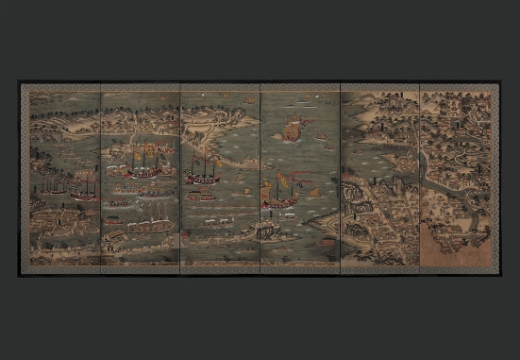
Ryukyu Koekiko Zubyobu (Folding screen with a picture of a trading port in Ryukyu)
- Municipal designated tangible cultural property
- Urasoe City
A folding screen vividly depicting Naha Port and the surrounding area at the end of the Ryukyu Kingdom era. The picture depicts Shurijo Castle, a tribute ship returning from China, and the appearance of Satsuma officials. It is stored at Urasoe Art Museum, the only “lacquer museum” in Okinawa.
Bus Stop: 4 minutes walk from Bijutsukan-mae Bus Stop
9
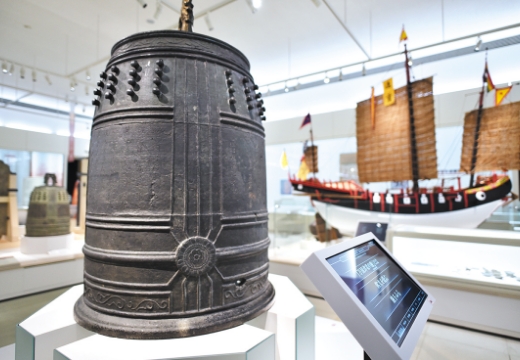
The Bell of the Old Shurijo Castle Seiden
- National important tangible cultural property
- Naha City
A bell cast under the order of King Sho Taikyu in 1458 when the Ryukyu Kingdom flourished through trade with Japan, China and Southeast Asian countries. “Bankoku shinryo” means “bridge between (or connecting) all nations of the world.”
Bus Stop: A short walk from Kenritsu Hakubutsukan-mae Bus Stop
Yui Rail: 10 minutes walk from Omoromachi Station
10
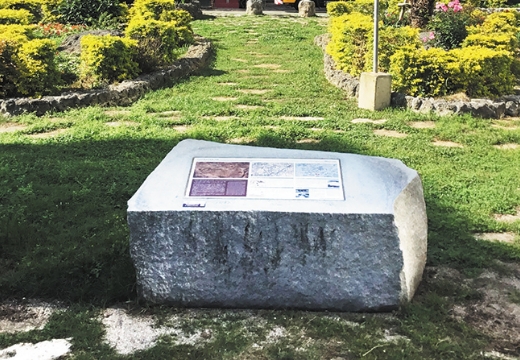
Historic Sites around Kumemura
- Yet to be designated (historic site)
- Naha City
Kumemura, where many cultural assets such as Tenpi-gu Shrine and the Temple of Confucius remain, was devastated during the Battle of Okinawa. However, the stone gate of Tenpi-gu managed to escape destruction, and only a few remnants of the past remain.
Bus Stop: 1 minutes walk from Kume Bus Stop
Yui Rail: 5 minutes walk from Asahibashi Station
11
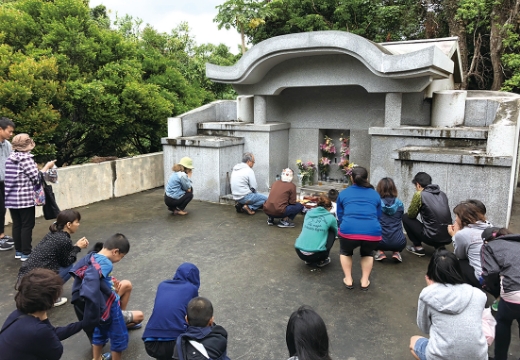
Shimi Festival
- Yet to be designated (livelihood culture)
- Naha City/Urasoe City
One of Okinawa’s typical ancestral rituals. Around March on the lunar calendar, Okinawan people visit their family tombs during the “Shimi Festival” during one of the “Nijushi Sekki (24 solar terms).” Unlike the tombs on mainland Japan, Okinawan tombs are large and usually has a space in front, where family members and relatives gather when they visit the tomb.
12
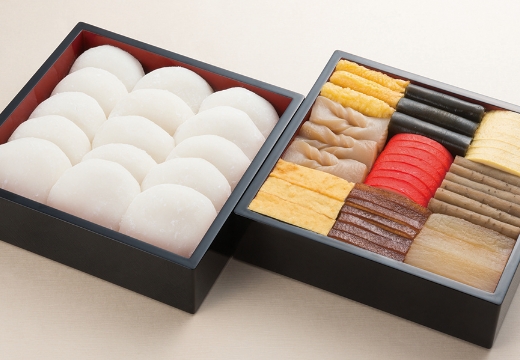
Usanmi (offering)
- Yet to be designated (livelihood culture)
- Naha City/Urasoe City
Offerings provided by each household when family members and relatives gather when they visit their family tombs during the Shimi Festival. After praying, they lay a rug on the space in front of the tomb and enjoy eating the usanmi together.
13
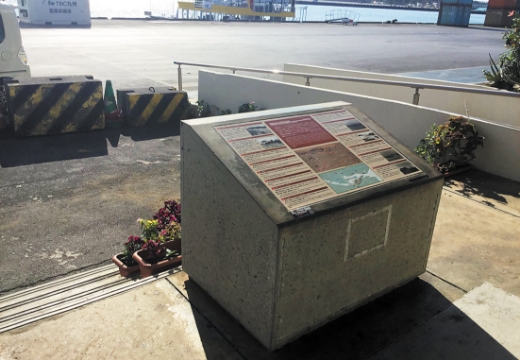
Historic Sites around Naha Port
- Yet to be designated (Historic site)
- Naha City
Many scenic spots and historic sites were scattered around the port, but most of them were destroyed during the Battle of Okinawa. Now it is possible to get an overview of what it was like in the past with pictures of the Kingdom era and photographs of the Meiji period.
Bus Stop: 2 minutes walk from Nahako-mae Bus Stop
Yui Rail: 11 minutes walk from Asahibashi Station
14
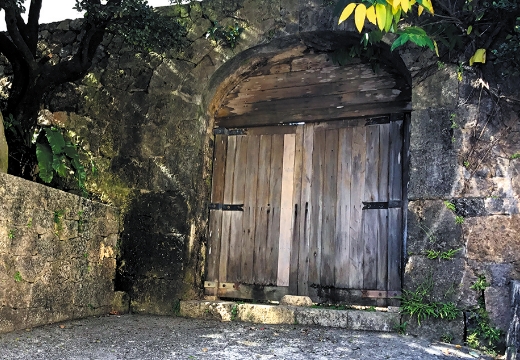
Stone Gate of the Kamitenpi-gu Shrine Site
- Municipal designated historic site
- Naha City
Tenpi-gu used to be a mausoleum in Kumemura consisting of upper and lower sections and Mazu (a Chinese sea goddess) known as the goddess of nautical safety. It was destroyed in the Battle of Okinawa, but the stone gate managed to escape destruction, and only a few remnants of the past remain.
Bus Stop: 1 minutes walk from Kume Bus Stop
Yui Rail: 5 minutes walk from Asahibashi Station
15
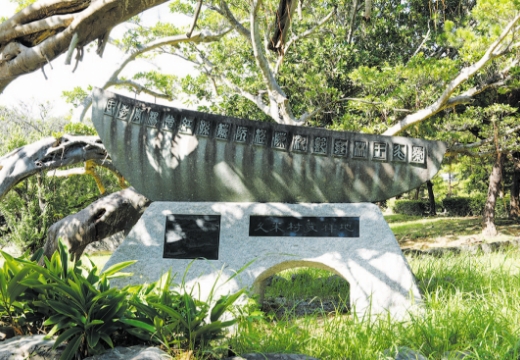
Kumemura 600th Anniversary Monument
- Yet to be designated (monument)
- Naha City
Members of the Bin-jin Sanjuroku sei, or 36 Min families, greatly contributed to the development of politics, economy, and culture since the Ryukyu Kingdom era. Honored for the role it played in the history of Okinawa, a monument was erected for Kumemura inside Matsuyama Park.
Bus Stop: 2 minutes walk from Kume Koshibyo-mae Bus Stop
Yui Rail: 7 minutes walk Prefectural Office Station
16
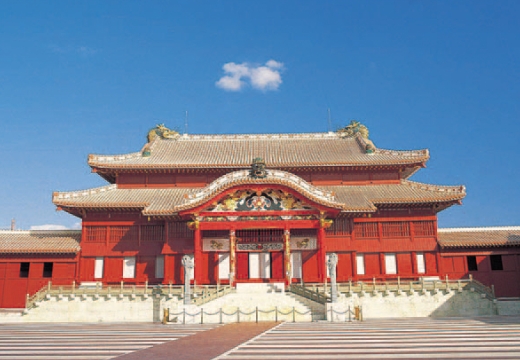
Shurijo Castle
- National designated historic site
- Naha City
The political, diplomatic, and cultural center of the Ryukyu Kingdom. It is the largest wooden building in Okinawa, incorporating Japanese and Chinese architectural styles. At the time that Chinese investiture envoys stayed in the Ryukyu Kingdom, ceremonies were held for them, and a stage was set up in front of the Hokuden, where various performing arts were performed.
Bus Stop: 1 minutes walk from Shurijo-mae Bus Stop
Yui Rail: 15 minutes walk from Shuri Station
17
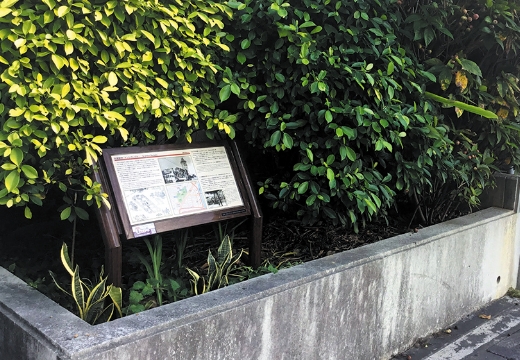
Tenshikan Remains
- Yet to be designated (historic site)
- Naha City
Remains of a lodging place for Chinese investiture envoys. It is said that the King directly went to the “Boshu no En,” the seventh of the Shichien (Seven Banquets), and presented the envoys with a gold fan and bid them farewell.
Bus Stop: 4 minutes walk from Naha shopping-mae Bus Stop
Yui Rail: 7 minutes walk from Asahibashi Station
18
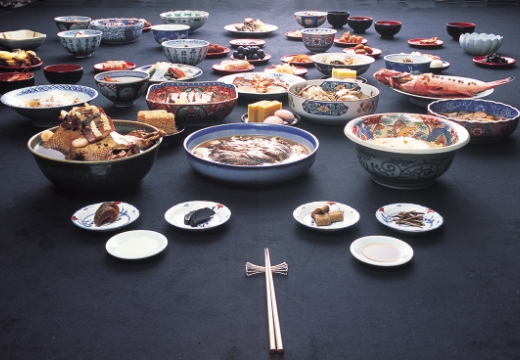
Ukwanshin Cuisine
- Yet to be designated (livelihood culture)
- Naha City
A banquet cuisine that evolved in line with the practice of entertaining Chinese investiture envoys. Food ingredients not found in Okinawa, such as swallow’s nests, shark fins, matsutake mushrooms, and venison Achilles tendons, were used generously. The Ryukyu Food Culture Institute is promoting the preservation, restoration, and dissemination of the food culture of the Ryukyu Kingdom.
19
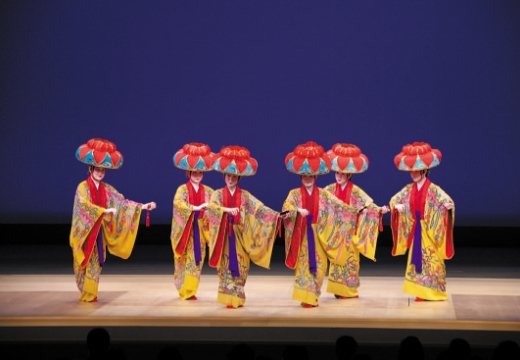
Ryukyuan Dance
- National important intangible cultural property (performing art)
- Naha City/Urasoe City
Ryukyuan Dance can be basically categorized into “Traditional Dance,” which evolved as a court performing art, “Zo Dance,” which incorporates the vitality of the people after the Meiji era, and “Creative Dance,” which developed after the end of World War II. In addition to preserving and promoting the Ryukyuan Dance, the National Theater Okinawa holds self-promoted performances.
20
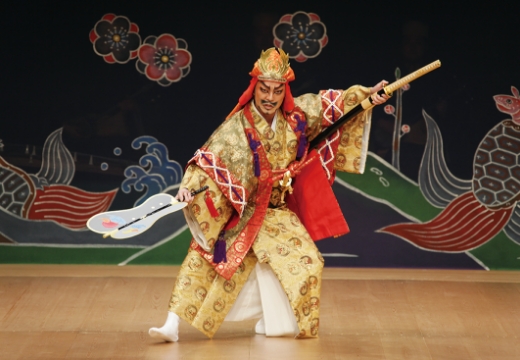
Kumi Odori
- National important intangible cultural property (performing art)
- Naha City/Urasoe City
This was first created and performed in 1719 to entertain Chinese investiture envoys. It is a traditional performing art that represents Okinawa and is being preserved and promoted by the National Theater Okinawa, where self-promoted performances are also held.
[Kumiodori performance and Ryukyu traditional dance can be viewed at the National Theatre Okinawa.]
Bus Stop: 1 minutes walk from Kokuritsu Gekijo-mae Bus Stop
21
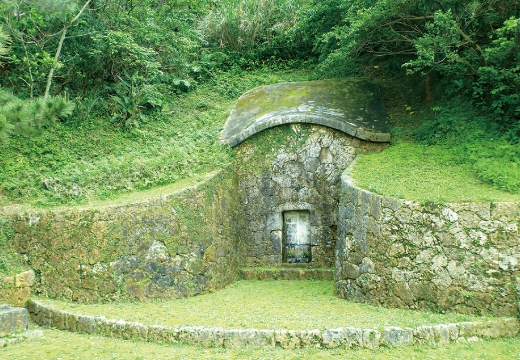
Tomb of Tamagusuku Chokun (Tomb of the Hentona Family)
- Municipal designated historic site
- Urasoe City
Tomb of Tamagusuku Chokun, who was appointed magistrate for entertaining Chinese investiture envoys. Tamagusuku Chokun created the Kumi Odori, which comprehensively incorporates music, dance, and dialogue.
Bus Stop: 9 minutes walk from Kokusai center-iriguchi Bus Stop
Yui Rail: 15 minutes walk from Urasoe-Maeda Station
22
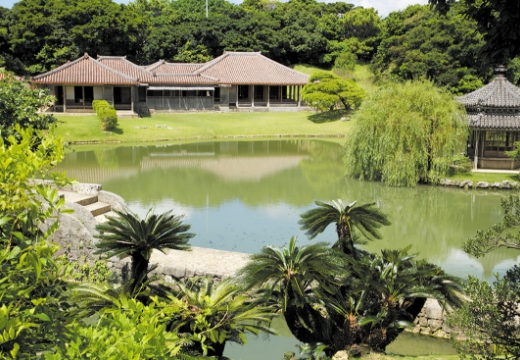
Shikinaen Royal Garden
- National special place of scenic beauty
- Naha City
The largest villa of the Ryukyu royal family. It was used for family rest and recreation as well as for entertaining foreign envoys. It was built in 1799, and Chinese investiture envoys were invited the following year. It can also be rented for Ryukyu-style wedding ceremonies.
Bus Stop: 5 minutes walk from Shikinaen-mae Bus Stop
23
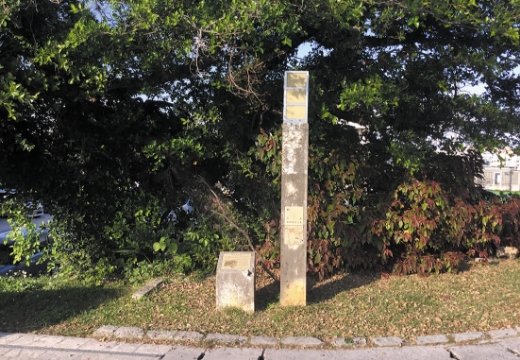
Site of Uchayaudun
- Yet to be designated (historic site)
- Naha City
Constructed in 1677 as a villa for the royal family of the Ryukyu Kingdom, it was used for such purposes as the King’s excursions as well as to entertain Chinese investiture envoys, etc. It was destroyed in the Battle of Okinawa, and the Shuri Catholic Church is currently being built on the site, so permission from the manager is required to enter the facility.
Bus Stop: 8 minutes walk from Kinjocho Bus Stop
Yui Rail: 12 minutes walk from Shuri Station
*Permission is required from management to access to the facility.
24

Tu’unda-bon Tray with Design of Figures and Landscape in Haku-e and 43 Items (Ryukyuan Lacquerware)
- Prefectural/Municipal designated cultural property (art and craft)
- Urasoe City
Ryukyuan lacquerware is an art and craft that is typical of the Ryukyu Kingdom. Lacquerware items were used during the Ryukyu Kingdom era when entertaining Chinese investiture envoys and as tributary gifts to China. Among these, the Tu’unda-bon tray is a typical Ryukyuan lacquerware with such shapes as square (5 items), hexagon (7 items), octagon (9 items), and circular.
Small plates contained inside the tray are beautiful in color and shape, and they are placed inside to match the number of guests for serving side dishes to accompany good quality sake. Typical side dishes are minudaru (pork steamed with sesame sauce), taumu (taro), and karaage (deep-fried food).
Ryukyuan lacquerware items are on permanent display at the Urasoe Art Museum, the only “lacquer museum” in Okinawa.
Bus Stop: 4 minutes walk from Bijutsukan-mae Bus Stop
25
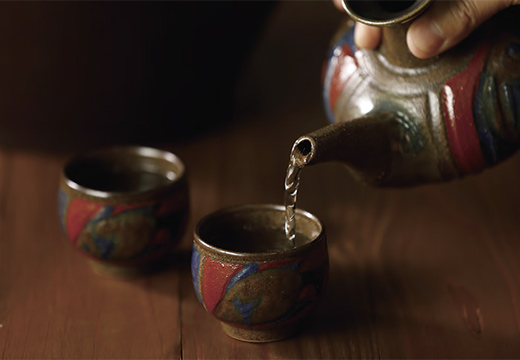
Ryukyu Awamori
- Yet to be designated (livelihood culture)
- Naha City
During the Ryukyu Kingdom era, awamori was a valuable item essential for diplomacy as a gift for the Edo Shogunate and for entertaining Chinese investiture envoys. In addition to being used as sake, it is also used as a seasoning that produces a unique flavor for such dishes as rafute (braised pork belly). Awamori is a liquor that improves in quality and gets a richer taste by letting it mature over a long time.
26
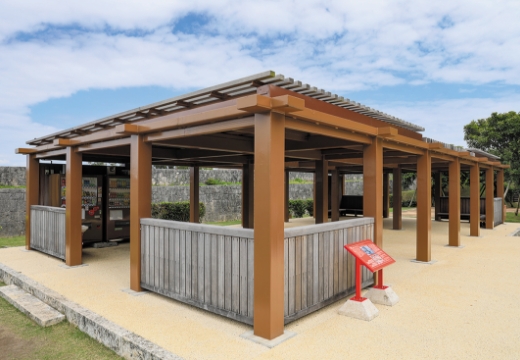
Shurijo Castle Zenikura Ruins
- Yet to be designated (historic site)
- Naha City
Awamori, money, and other items were stored here during the Ryukyu Kingdom era. Currently, a rest area has been built on the site and is used for awamori-related events.
Bus Stop: 1 minutes walk from Shurijo-mae Bus Stop
Yui Rail: 15 minutes walk from Shuri Station
27
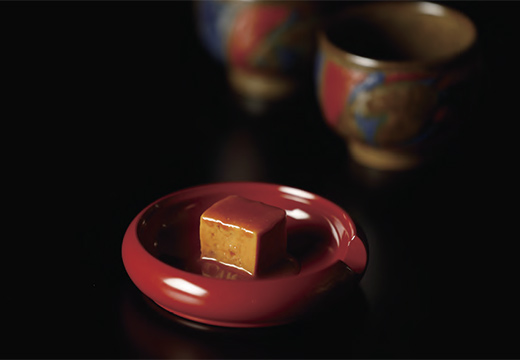
Tofuyo
- Yet to be designated (livelihood culture)
- Naha City/Urasoe City
Fermented food made from tofu processed with rice malt and awamori. Because of its rich flavor and aroma, it is also called oriental cheese. It used to be made only in Shuri and Naha.
28
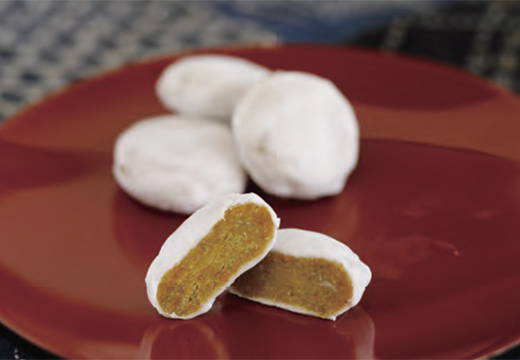
Kippan
- Yet to be designated(livelihood culture)
- Naha City
Kippan are a confection made by boiling citruses such as kunenbo and kabuchi in sugar until they are reduced. They have been made since the Ryukyu Kingdom era.
Currently, it is made in only one store in Naha City.
29
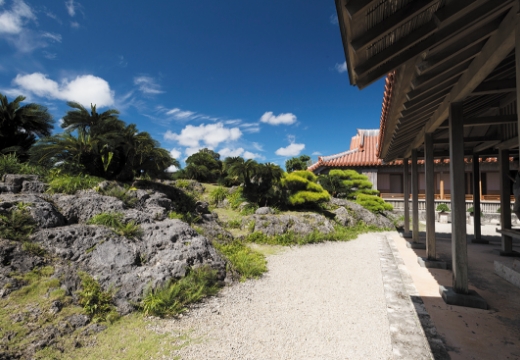
Shurijo Castle Shoin/Sasunoma Garden
- National place of scenic beauty
- Naha City
The Shoin was the King’s office, while the Sasunoma was the prince’s waiting room. Together with these buildings, the only full-fledged garden inside the castle grounds constitute a scenic spot. Currently, hands-on lessons in Ryukyuan confectionery are being conducted here.
Bus Stop: 1 minutes walk from Shurijo-mae Bus Stop
Yui Rail: 15 minutes walk from Shuri Station
*Shurijo Castle was destroyed in the fire.
30
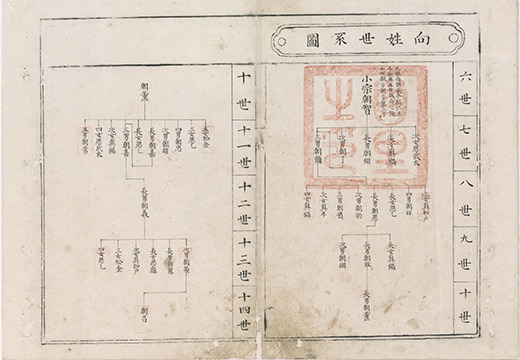
Genealogy of Hentona Family with the family name Sho
- Municipal designated tangible cultural property
- Urasoe City
A historical record containing the achievement of Tamagusuku Chokun, who was appointed as the magistrate to entertain Chinese investiture envoys, and the genealogical record of his family. He created the Kumi Odori, which comprehensively incorporates music, dance, and dialogue.
